- xchu's home page
- Posts
- 2024
- October (1)
- 2023
- 2022
- 2021
- December (2)
- November (1)
- October (1)
- September (1)
- August (2)
- July (1)
- June (3)
- May (2)
- April (3)
- March (1)
- 2020
- October (2)
- September (1)
- August (5)
- July (1)
- June (3)
- May (3)
- April (1)
- March (2)
- February (4)
- January (1)
- 2019
- My blog
- Post new blog entry
- All blogs
dipi0-correlation-pp-pAu-dAu-analysis-preliminary-results
Preliminary results: Dipi0 correlation in √s = 200 GeV dAu collisions at STAR
The run15 pp/pAu analysis can be found: https://arxiv.org/abs/2111.10396
Plots and conclusions:
1. The invariant mass spectra for di-photon in pp, pAu and dAu. The on mass range is chosen as 0.07-0.2 GeV/c^2, the off mass range is 0.2-0.35 GeV/c^2
Conclusion: the invariant mass spectra in pp and pAu are similar, but in dAu, the background is much higher compared with pp and pAu
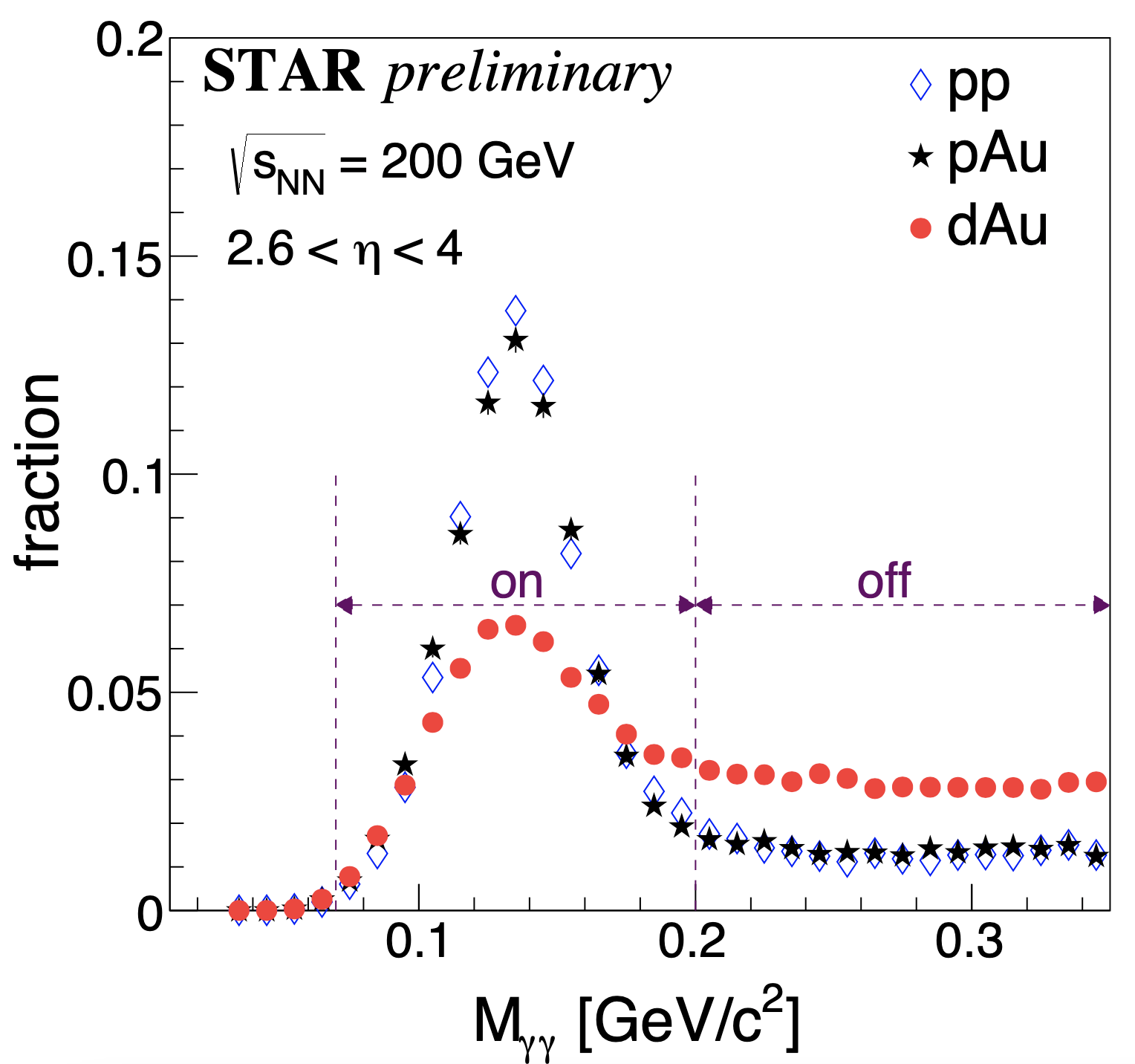
2. The correlation function comparison in pp, pAu and dAu at the lowest pT (pT1 = 1.5-2 GeV/c, pT2 = 1-1.5 GeV/c) without pedestal subtraction in dAu (left). The correlation function comparison in pp, pAu and dAu at the lowest pT (pT1 = 1.5-2 GeV/c, pT2 = 1-1.5 GeV/c), the correlation functions in dAu are shifted to be with the same pedestal as pAu (right). All collisions systems are shown with on mass pi0 - on mass (0.07-0.2 GeV/c^2) pi0 correlation.
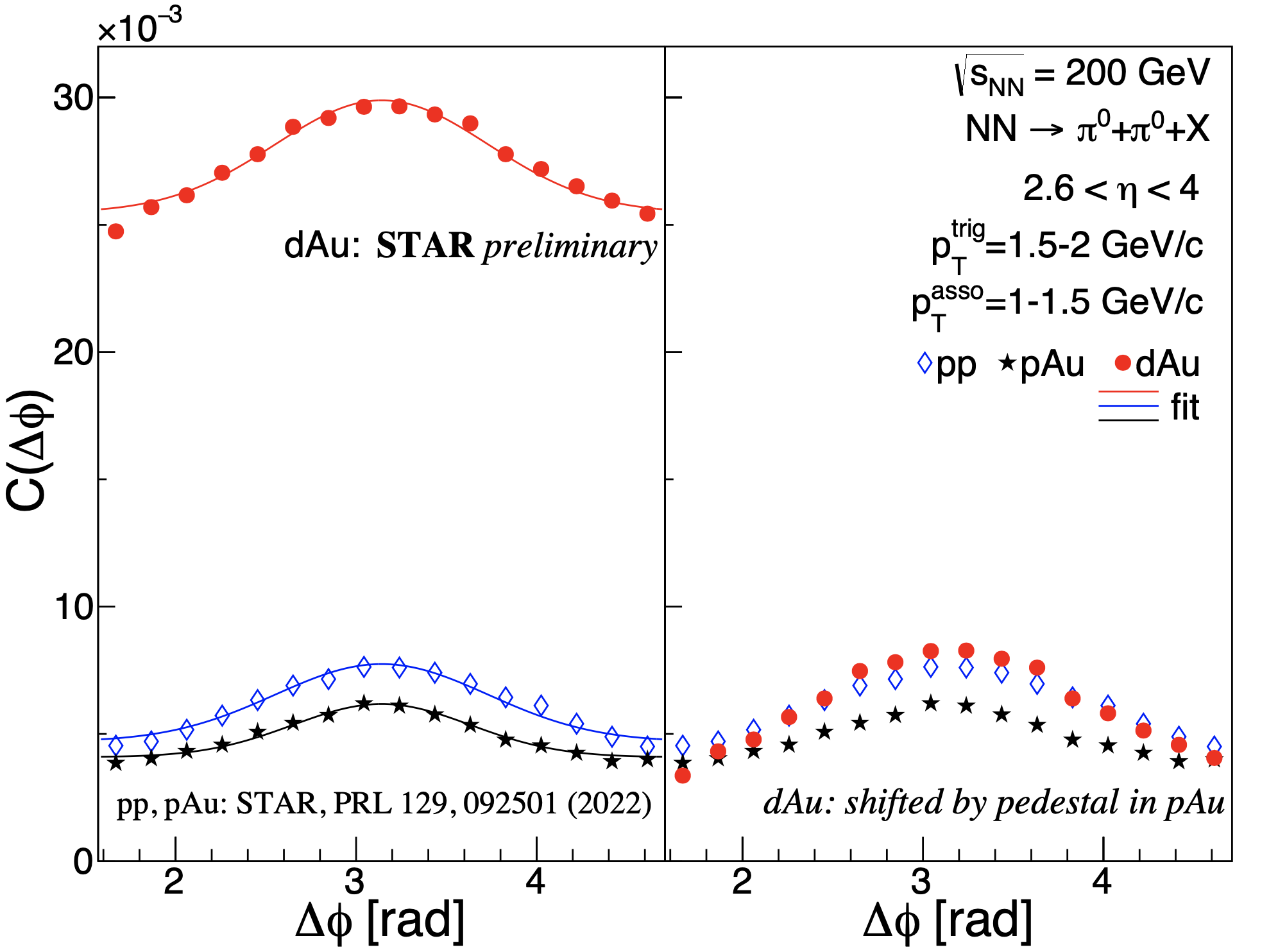
3. The correlation function comparison in pp, pAu and dAu. All collisions systems are shown with on mass pi0 - on mass pi0 correlation. The correlation functions in dAu are shifted to be with the same pedestal as pAu.
Conclusion: we didn't observe the suppression in dAu as we found in pAu in relative to pp. The comparison of dAu and pp is not fair due to different S/B ratio of pi0 in these two collision systems (see figure. 1)
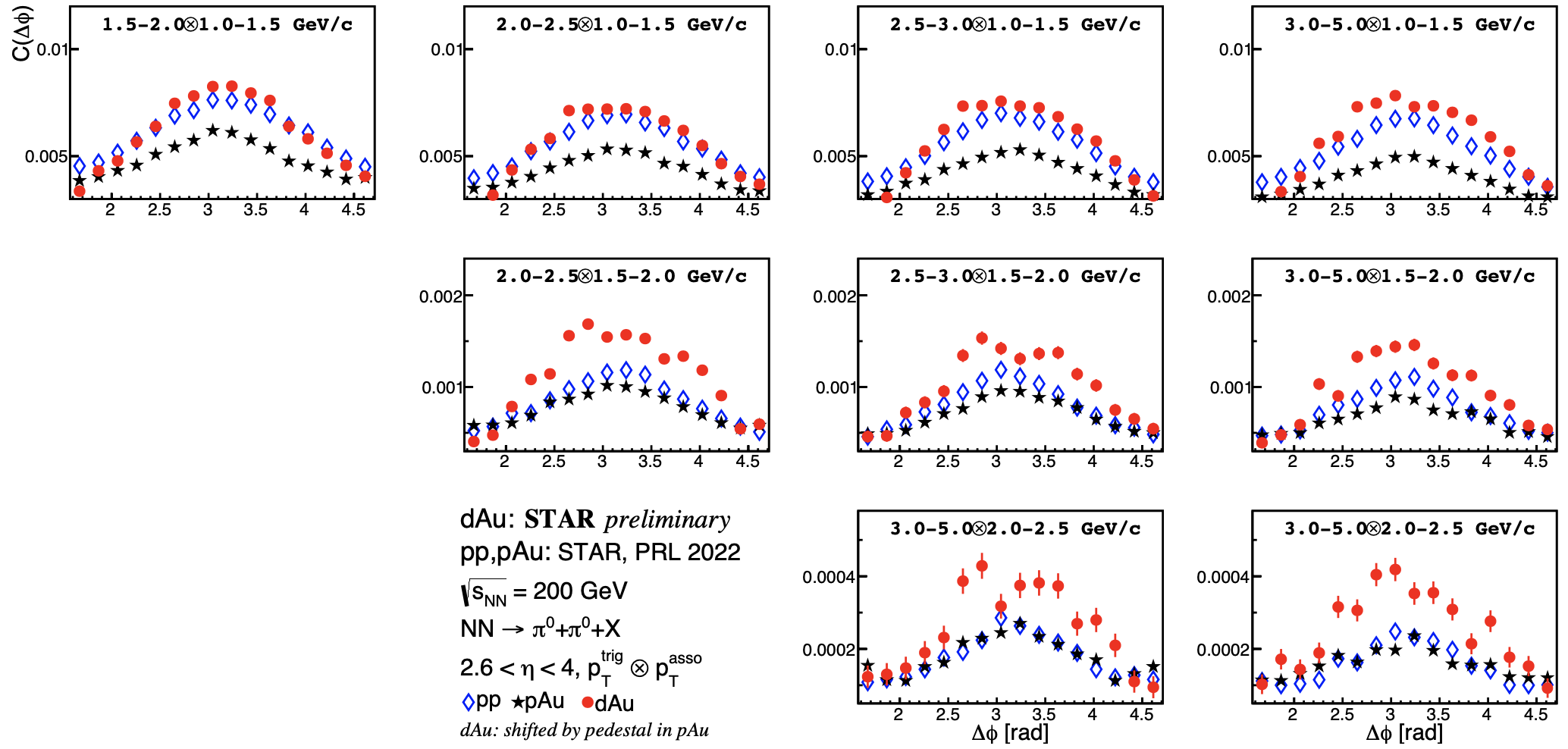
4. The comparison of STAR and PHENIX. For STAR, it's shown with on mass pi0 - on mass pi0 correlation, for PHENIX, it's cluster - on mass pi0 correlation. There are other different configurations for two experiments showing in the plots
Conclusion:
1). there is not centrality dependence from PHENIX or E.A. dependence from STAR in the overlapping pT ranges;
2). with slightly different sets up for STAR and PHENIX experiments, we saw the consistence in the results between two experiments;
3). the results don't agree with the previous run8 STAR results (arXiv:1008.3989v1);
4). the theory predictions based on PHENIX paper needs to be clarified: for example predictions of figure 6, the centrality dependence is not shown in the data;

5. The area ratio of dAu/pp and pAu/pp in different mass windows. The trigger pi0 pT is 1.5-5 GeV/c, the associated pi0 pT = 1-1.5 GeV/
Conclusion: the ratio of pAu/pp is stable in different mass windows, however in dAu, specially in on-off case, the correlation is significantly higher. This is another reason that it's not fair to directly compare the on mass correlation in dAu and pp due to a different background contribution in dAu compared to pp
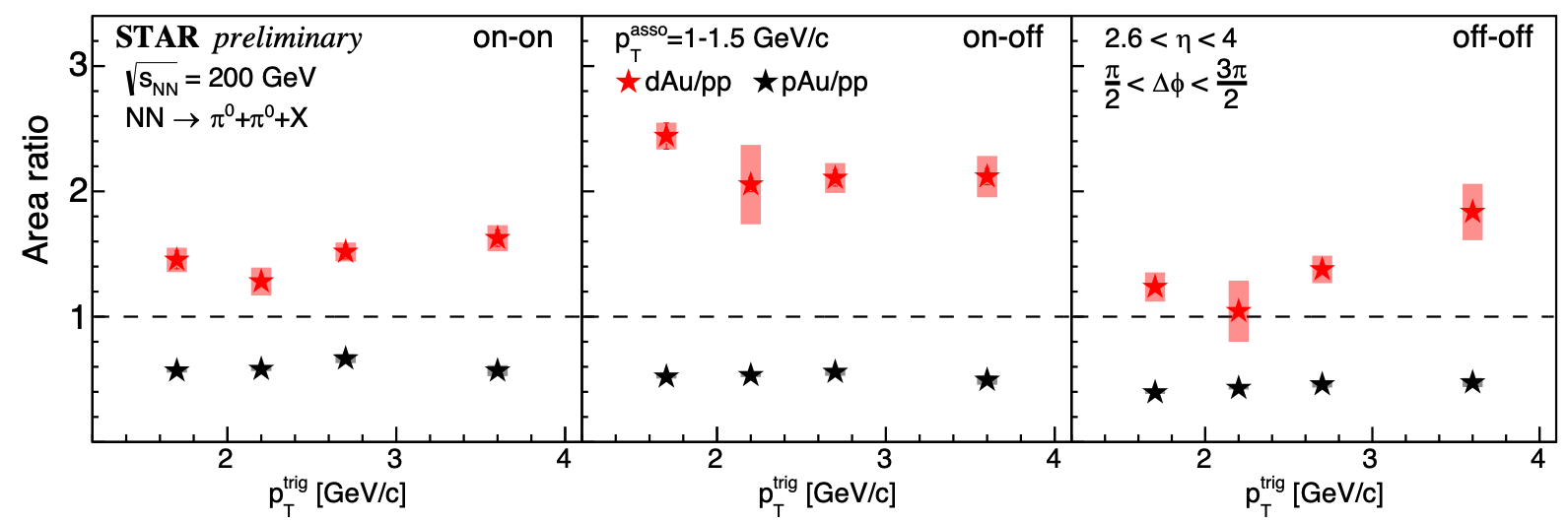
6. The width ratio of dAu/pp and pAu/pp in different mass windows. The trigger pi0 pT is 1.5-5 GeV/c, the associated pi0 pT = 1-1.5 GeV/c
Conclusion: the width is similar in pp, pAu and dAu
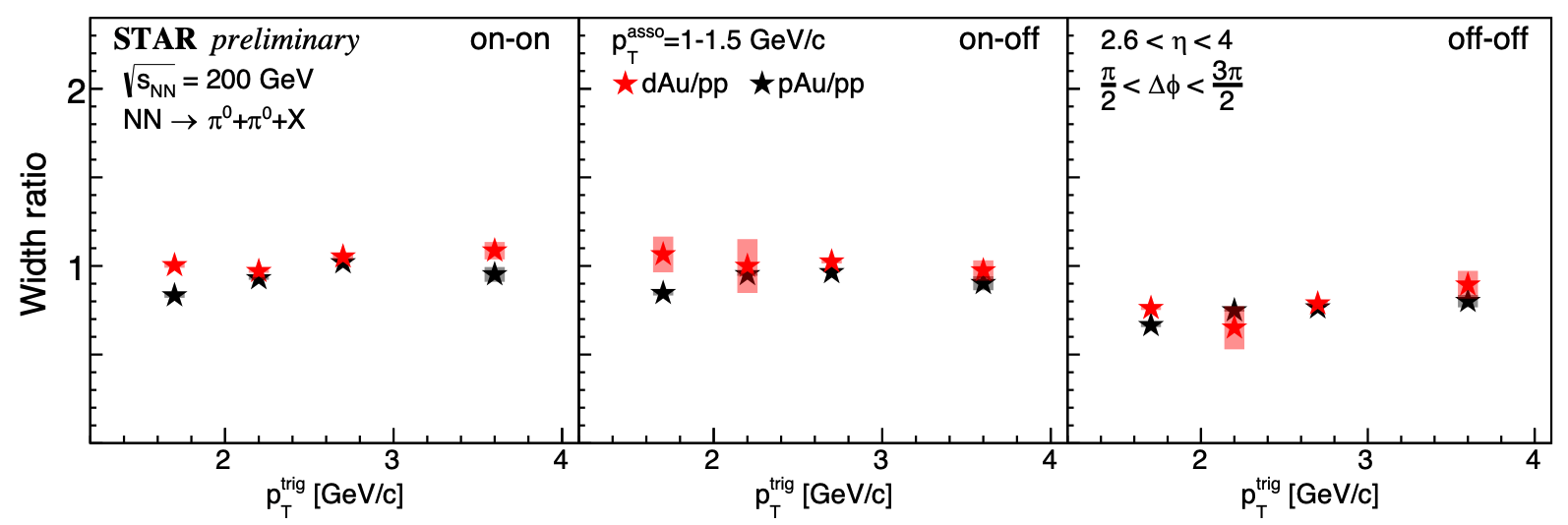
7. The pedestal ratio of dAu/pp and pAu/pp in different mass windows. The trigger pi0 pT is 1.5-5 GeV/c, the associated pi0 pT = 1-1.5 GeV/c
Conclusion: the pedestals in pp and pAu are similar, but pedestal in dAu is much higher
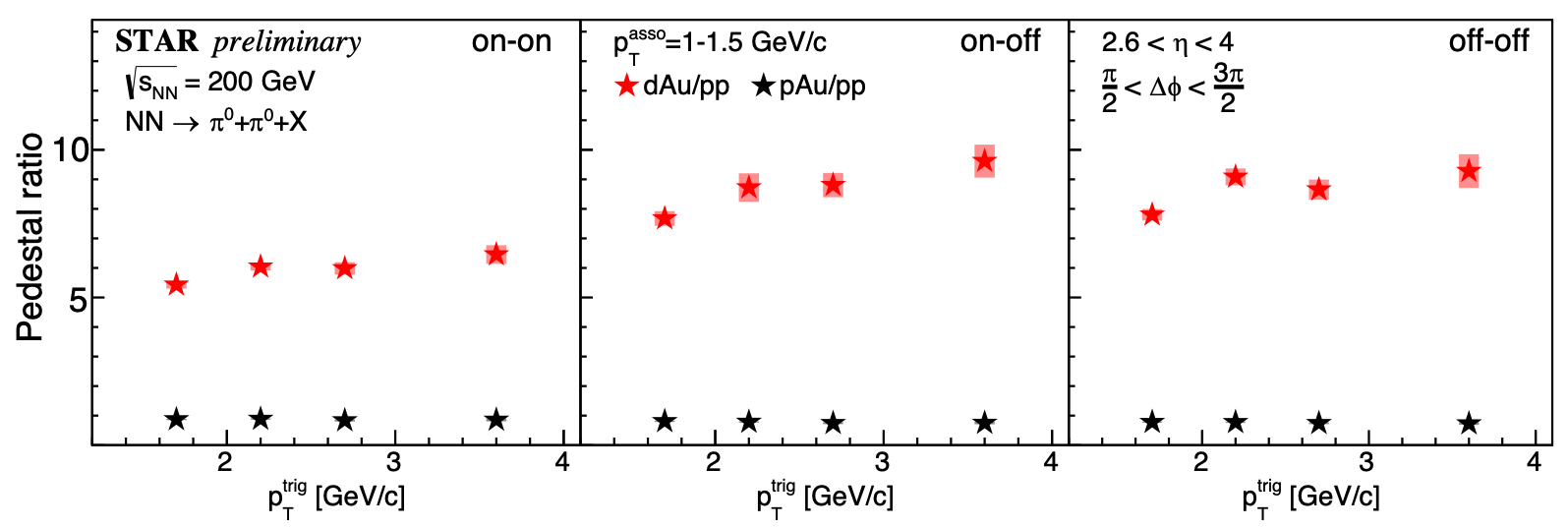
8. The parameter ratio of dAu/pp and pAu/pp in different mass windows. The trigger pi0 pT is 1.5-2 GeV/c, the associated pi0 pT = 1-1.5 GeV/c
.png)
Presentation in PWG:
https://drupal.star.bnl.gov/STAR/blog/xchu/Run16-dipi0-PWG
Summary:
1. With STAR FMS dipi0 data, no real physics conclusion can be made for dipi0 correlation in dAu since the combinatoric background correlation is different in dAu and pp/pAu
2. The STAR results roughly agree with the previous PHENIX measurement, note there are slightly difference between the sets up of two experiments
3. It’s challenging to measure the real dipi0 correlations in dAu, this measurement should be performed in cleaner pAu collisions at STAR or future eA collisions at EIC, or, we measure the charged hadron correlation in dAu by gain of the tracking (much better PID compared to calorimeter)
4. The conclusion of PHENIX paper (PRL 107, 172301) and some following theoretical predictions should be clarified.
- xchu's blog
- Login or register to post comments
